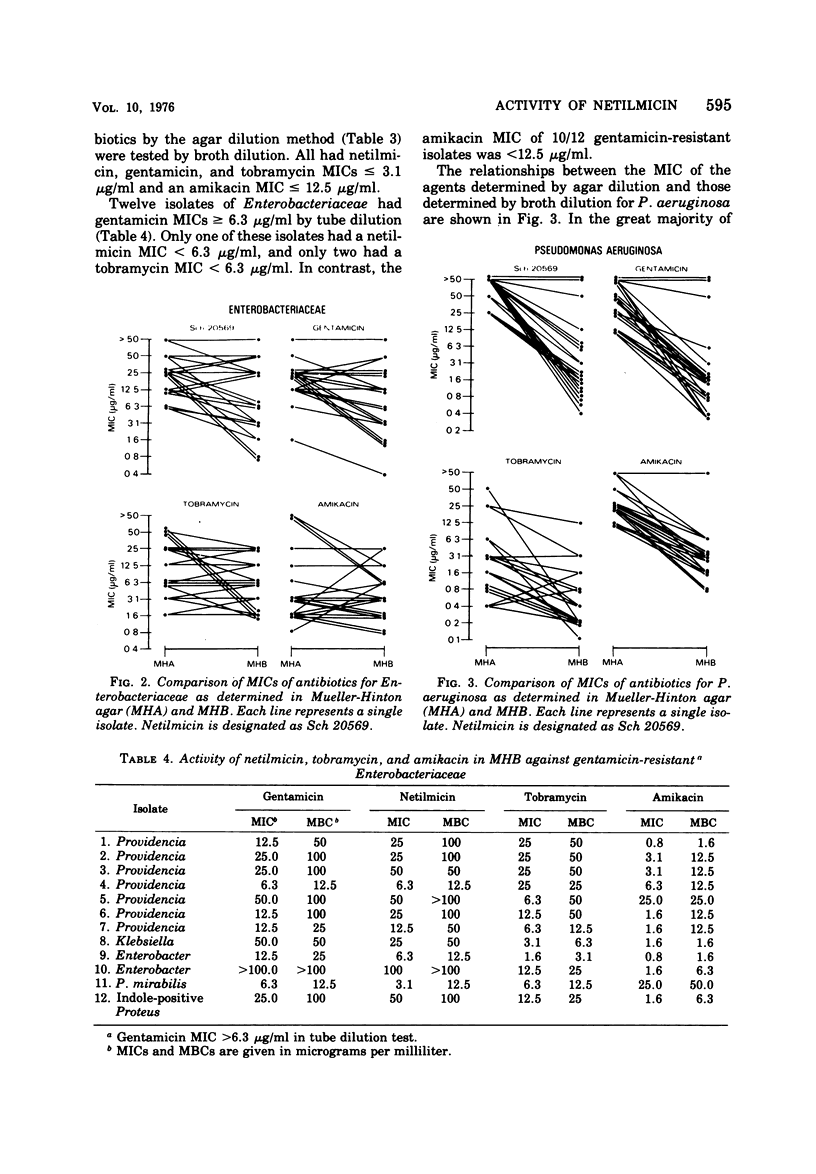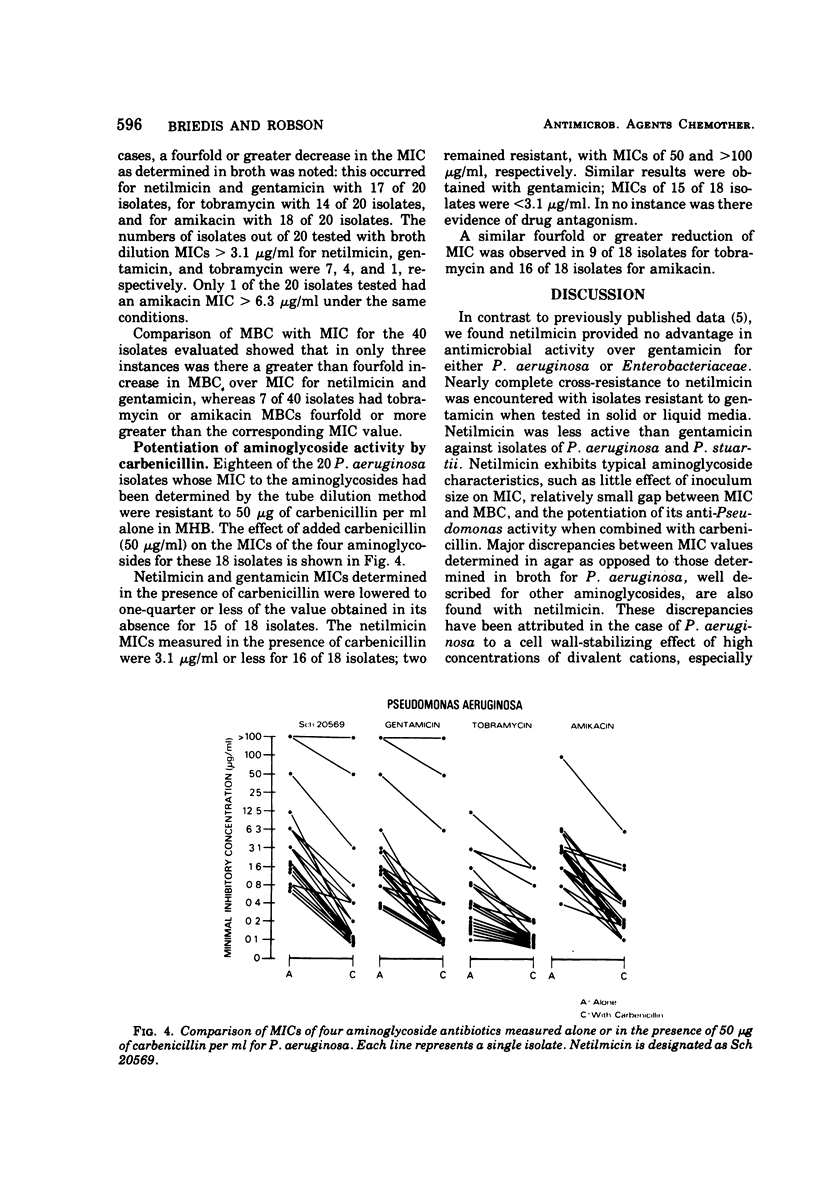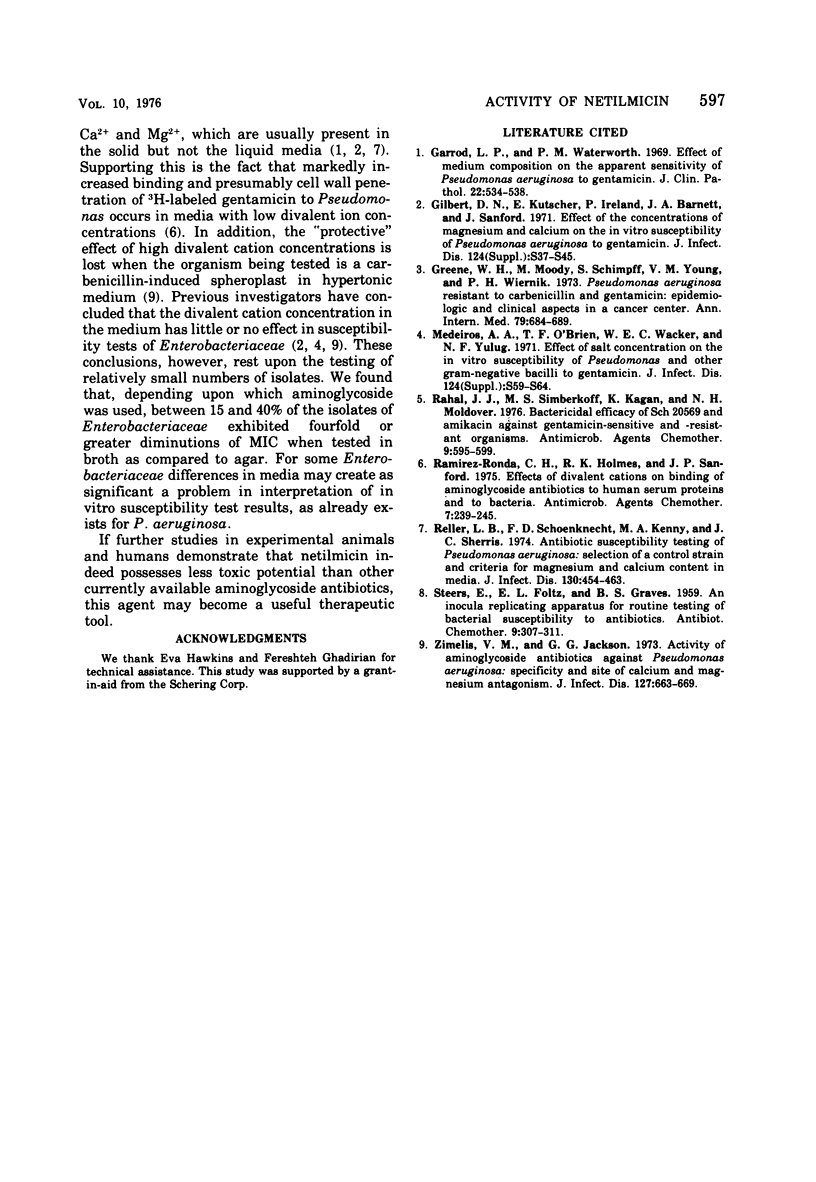Abstract
Netilmicin (Sch 20569), a semisynthetic aminoglycoside antibiotic, was compared with gentamicin, tobramycin, and amikacin against 242 clinical isolates of Pseudomonas and Enterobacteriaceae. The minimum inhibitory concentration (MIC) was determined in both solid and liquid media. Netilmicin exhibited typical aminoglycoside properties, such as little effect of inoculum size on MIC, relatively small gap between MIC and minimum bactericidal concentration, and potentiation of anti-Pseudomonas activity in the presence of carbenicillin. Netilmicin provided no advantage in antimicrobial activity over gentamicin for either Pseudomonas or Enterobacteriaceae. Nearly complete cross-resistance to netilmicin was encountered with isolates resistant to gentamicin in either solid or liquid media. Netilmicin was less active than gentamicin against isolates of Pseudomonas and Providencia. Major discrepancies between MIC values determined in agar as opposed to those determined in broth were encountered for most isolates of Pseudomonas but also, depending upon antibiotic tested, for between 15 and 40% of isolates of Enterobacteriaceae. This new aminoglycoside agent will be useful clinically only if it is shown to be significantly less toxic than presently available analogues.
Full text
PDF





Selected References
These references are in PubMed. This may not be the complete list of references from this article.
- Garrod L. P., Waterworth P. M. Effect of medium composition on the apparent sensitivity of Pseudomonas aeruginosa to gentamicin. J Clin Pathol. 1969 Sep;22(5):534–538. doi: 10.1136/jcp.22.5.534. [DOI] [PMC free article] [PubMed] [Google Scholar]
- Gilbert D. N., Kutscher E., Ireland P., Barnett J. A., Sanford J. P. Effect of the concentrations of magnesium and calcium on the in-vitro susceptibility of Pseudomonas aeruginosa to gentamicin. J Infect Dis. 1971 Dec;124 (Suppl):S37–S45. doi: 10.1093/infdis/124.supplement_1.s37. [DOI] [PubMed] [Google Scholar]
- Greene W. H., Moody M., Schimpff S., Young V. M., Wiernik P. H. Pseudomonas aeruginosa resistant to carbenicillin and gentamicin. Epidemiologic and clinical aspects in a cancer center. Ann Intern Med. 1973 Nov;79(5):684–689. doi: 10.7326/0003-4819-79-5-684. [DOI] [PubMed] [Google Scholar]
- Medeiros A. A., O'Brien T. F., Wacker W. E., Yulug N. F. Effect of salt concentration on the apparent in-vitro susceptibility of Pseudomonas and other gram-negative bacilli to gentamicin. J Infect Dis. 1971 Dec;124 (Suppl):S59–S64. doi: 10.1093/infdis/124.supplement_1.s59. [DOI] [PubMed] [Google Scholar]
- Rahal J. J., Jr, Simberkoff M. S., Kagan K., Moldover N. H. Bactericidal efficacy of Sch 20569 and amikacin against gentamicin-sensitive and -resistant organisms. Antimicrob Agents Chemother. 1976 Apr;9(4):595–599. doi: 10.1128/aac.9.4.595. [DOI] [PMC free article] [PubMed] [Google Scholar]
- Ramirez-Ronda C. H., Holmes R. K., Sanford J. P. Effects of divalent cations on binding of aminoglycoside antibiotics to human serum proteins and to bacteria. Antimicrob Agents Chemother. 1975 Mar;7(3):239–245. doi: 10.1128/aac.7.3.239. [DOI] [PMC free article] [PubMed] [Google Scholar]
- Reller L. B., Schoenknecht F. D., Kenny M. A., Sherris J. C. Antibiotic susceptibility testing of Pseudomonas aeruginosa: selection of a control strain and criteria for magnesium and calcium content in media. J Infect Dis. 1974 Nov;130(5):454–463. doi: 10.1093/infdis/130.5.454. [DOI] [PubMed] [Google Scholar]
- Zimelis V. M., Jackson G. G. Activity of aminoglycoside antibiotics aganst Pseudomonas aeruginosa: specificity and site of calcium and magnesium antagonism. J Infect Dis. 1973 Jun;127(6):663–669. doi: 10.1093/infdis/127.6.663. [DOI] [PubMed] [Google Scholar]


